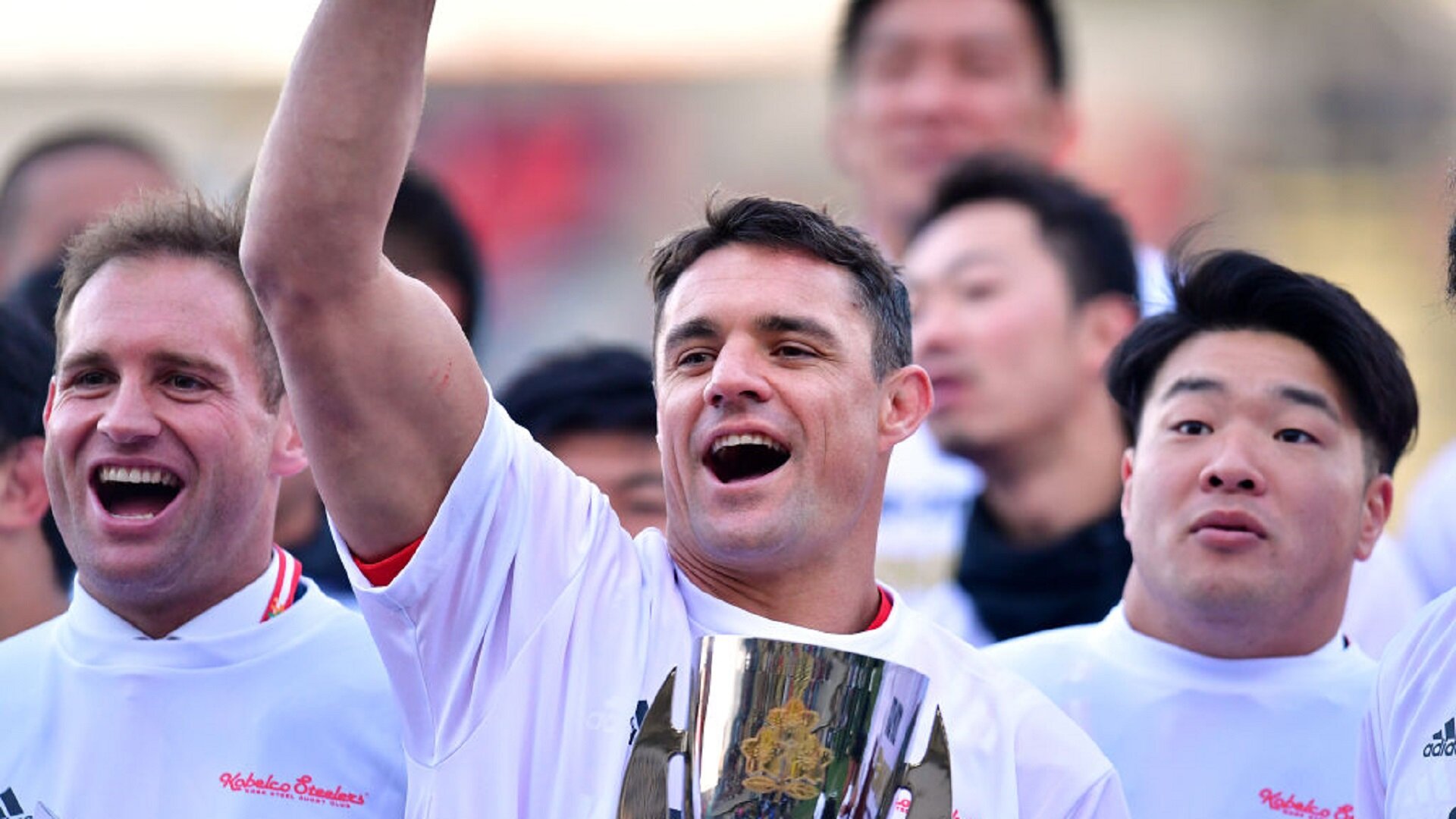Super Rugby's loss is very much the Japan Top League's gain

Australian, New Zealander and South African rugby players opting for stints in Japan is nothing new, but the post-Rugby World Cup exodus seems to be reaching new levels in this increasing well-trodden pathway.
With 15 contracted Super Rugby players currently confirmed to take up Top League contracts at the end of this season, the Japanese competition is preparing itself to further close the quality gap on Super Rugby.
Brodie Retallick’s confirmed move to Kobe Steelers doesn’t bode well for the All Blacks, despite the lock agreeing to move back to New Zealand in 2021. Fellow engine room member Sam Whitelock is also set to join the Panasonic Wild Knights after the RWC, albeit his stay is just for one year.
Other experienced figures within the All Blacks are also taking sabbaticals in or making full-time moves to Japan, with Kieran Read (Toyota Verblitz), Ryan Crotty (Kubota Spears) and Liam Squire (NTT Docomo Red Hurricanes) among those leaving. Promising talents such as Jackson Hemopo (Mitsubishi DynaBoars) and Tevita Li (Suntory Sungoliath) are also off.
Australia are being hit, too, with Samu Kerevi (Suntory Sungoliath) and David Pocock (Panasonic Wild Knights) among the high profile departures. Super Rugby regulars like Wharenui Hawera (Kubota Spears), Sam Talakai (Suntory Sungoliath) and Tom English (Kurita Water Gush) are also opting to try their luck in the Land of the Rising Sun.
? REACTION | Get the inside scoop on Brodie Retallick's unique deal with @NZRugby and @ChiefsRugby which will see him take time away from New Zealand Rugby from 2020.
FULL VIDEO ?? https://t.co/ixYaNRPb6l pic.twitter.com/ocGWqTPTj6
— All Blacks (@AllBlacks) June 12, 2019
South Africa have been losing players to Japan for some time now and that is set to continue this year, with Jesse Kriel (Canon Eagles) headlining their latest group of departures. They will join numerous South Africans already contracted to a multitude of Japanese clubs.
Aside from all players who will bolster their Top League sides and help that competition to make up ground on Super Rugby, the cross-country southern hemisphere tournament also has to deal with its annual player exodus to Europe.
Eben Etzebeth, Nehe Milner-Skudder (both Toulon), Handré Pollard (Montpellier), Lood de Jager (Sale Sharks), Waisake Naholo, Adam Coleman (both London Irish), Jordan Taufua (Leicester Tigers) and Owen Franks (Northampton Saints) are just some of the established players leaving the competition this year.
https://www.instagram.com/p/BxCHbGqgKWm/
As the Top League embraces rising average attendances, corporate funding and the potential of a swell in support following a home Rugby World Cup later this year, the time for the Top League to make the leap from a competition in the shadow of Super Rugby and its European counterparts and declare itself an equal could soon be here.
One thing which has held back the Top League has been Japanese rugby’s traditional route of picking up players from the top university sides, meaning that players don’t tend to be brought into a professional rugby environment until they are 21 or 22. That delayed their development when compared to the majority of tier one rugby nations.
Japan under-20 captain and back row Shota Fukui has recently bucked that trend, signing with the Panasonic Wild Knights straight out of school. He has impressed in the opportunities he has had at the club, in the international age-grade side and even in invitational teams, such as the World XV that took part in the Global Rapid Rugby Showcase Series.
"Kobe Steel Claim Top League Title" Read full story here: https://t.co/Mr8uXLypt7 #rugbyjp pic.twitter.com/ZJWcL1Agt1
— Japan Rugby (@JRFURugby) December 17, 2018
If Top League clubs can start to more regularly contract players at this age and get them playing competitive rugby at 19 or 20, it will not only improve the quality of the Top League in the years to come, it will also ensure that the national side doesn’t have to play catch up so significantly when they blood top-end talents at 23 or 24 who have little professional rugby experience.
The competition is also attracting some of the top rugby minds, with Robbie Deans, Frans Ludeke, Allister Coetzee, Jake White and Rob Penney all calling the competition home. Two-time World Cup-winning coach Steve Hansen is set to join them at the end of this year.
The Top League’s shorter schedule and season appeals to players from a welfare perspective while the salaries, for prominent players are also enticing. Obtaining visas can be the biggest issue, particularly for players from Europe who wish to try their luck in the competition, although it is far from impossible, with Tom Savage (Suntory Sungoliath) the latest to follow in the footsteps of Shane Williams, James Haskell and George Parling.
With all eyes on Japan this year as they host the RWC, the Top League’s profile will only rise over the next few months with even more southern hemisphere stars set to confirm moves to the competition for the 2020 season, which will kick off in January.
If the World Cup proves to be a success and helps grow rugby support in the country, there is an increasingly appetising domestic product for these new fans to throw their support behind.
WATCH: Part one of the two-part RugbyPass documentary on what fans can expect in Japan at this year’s World Cup
























































































